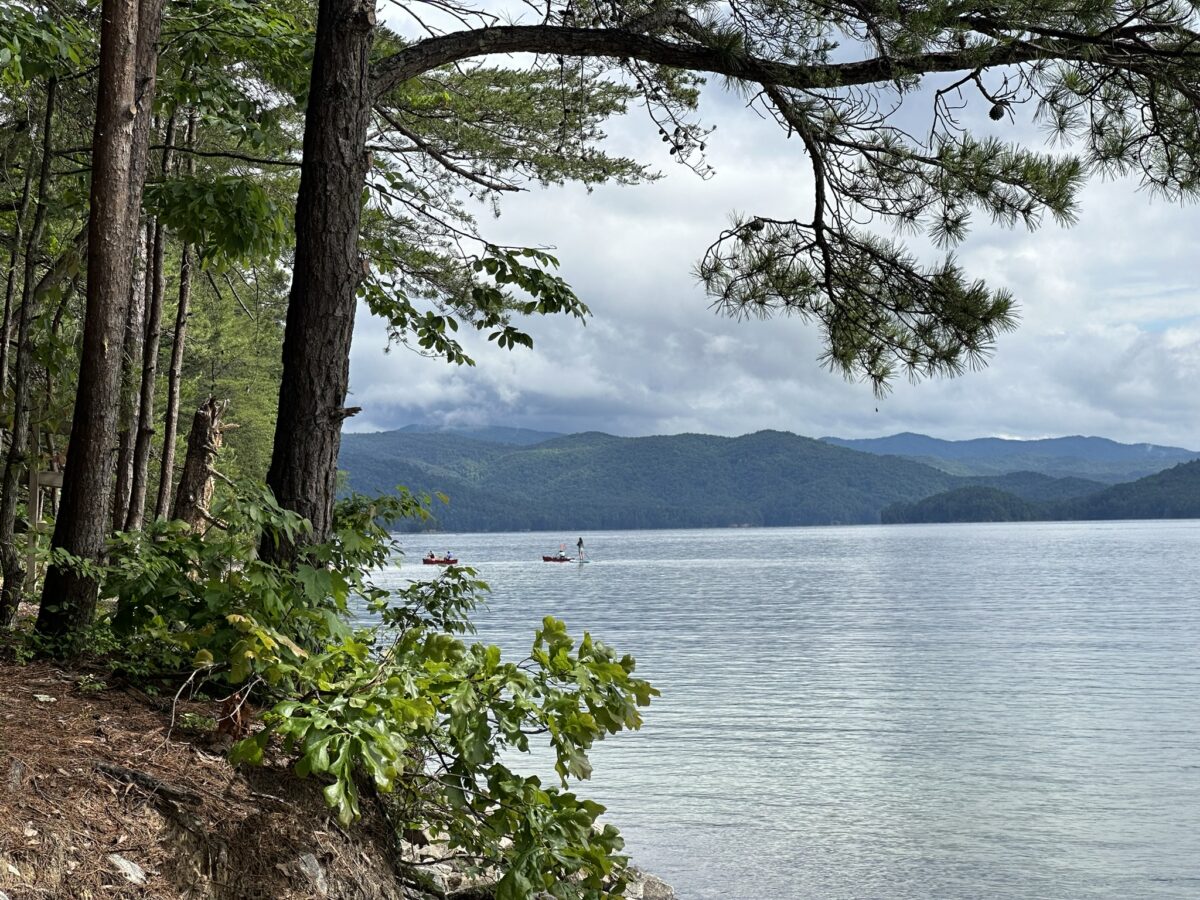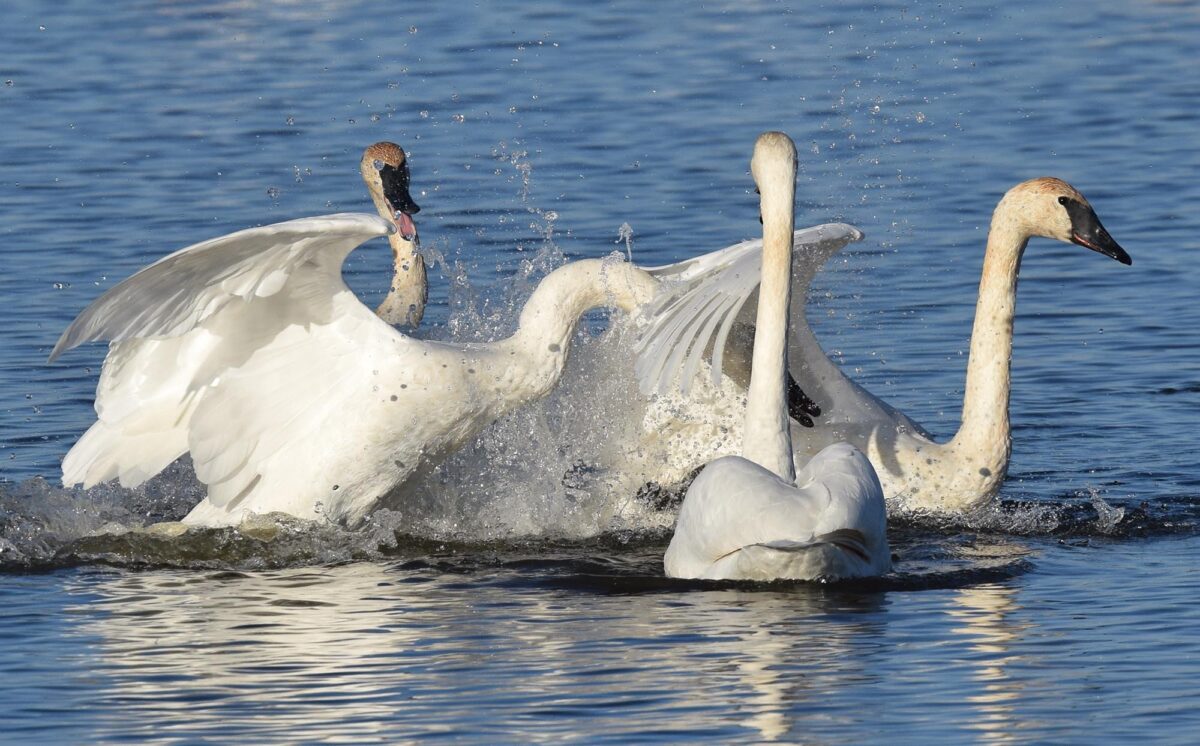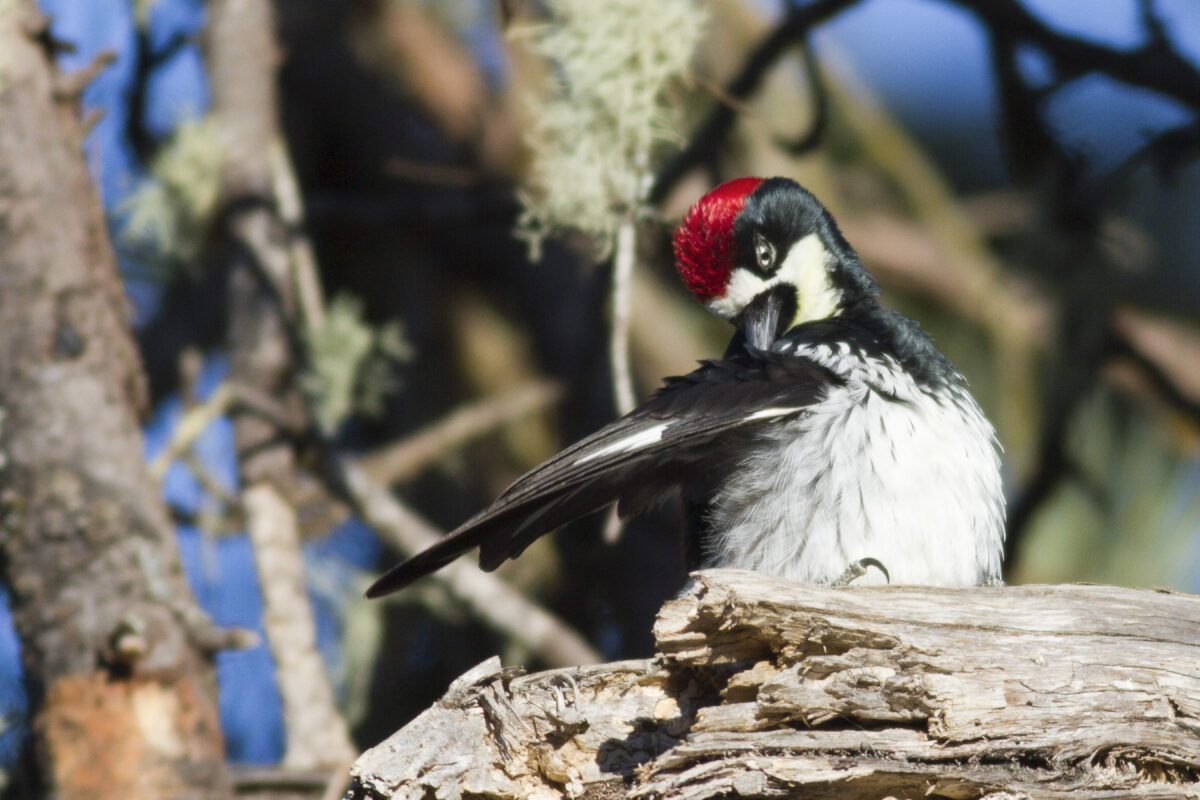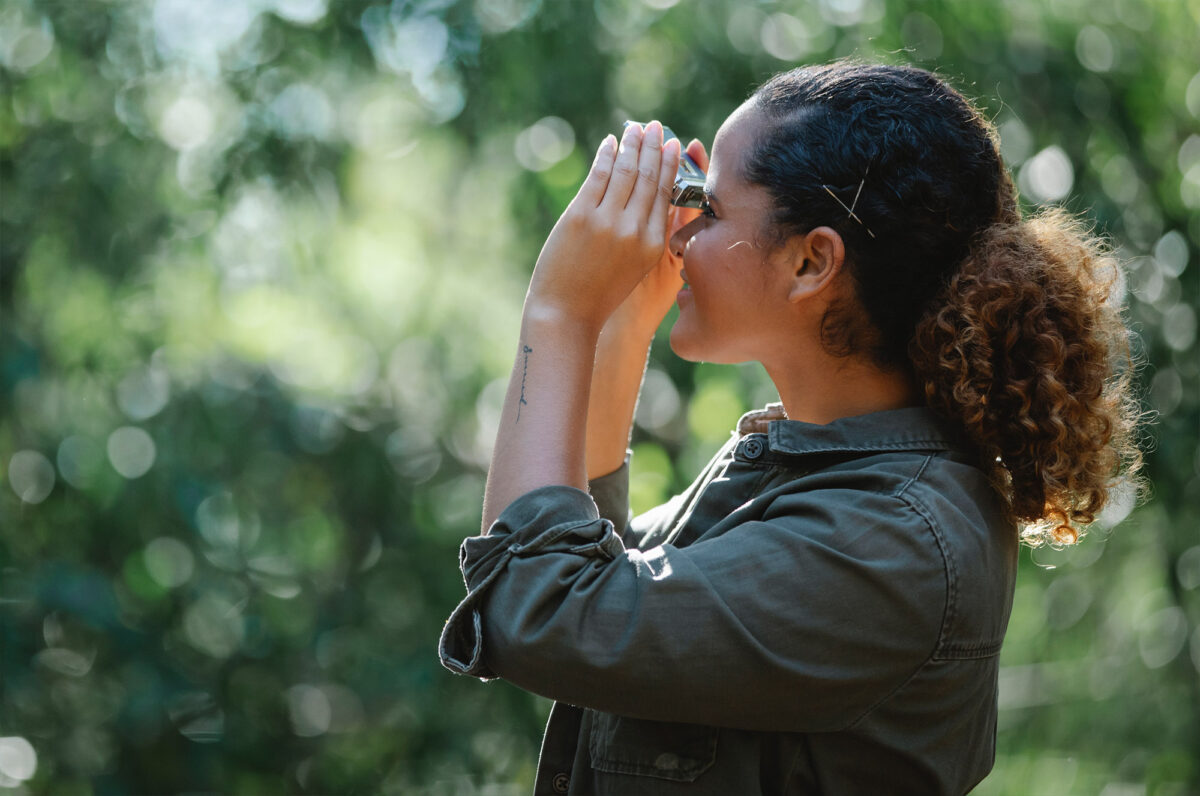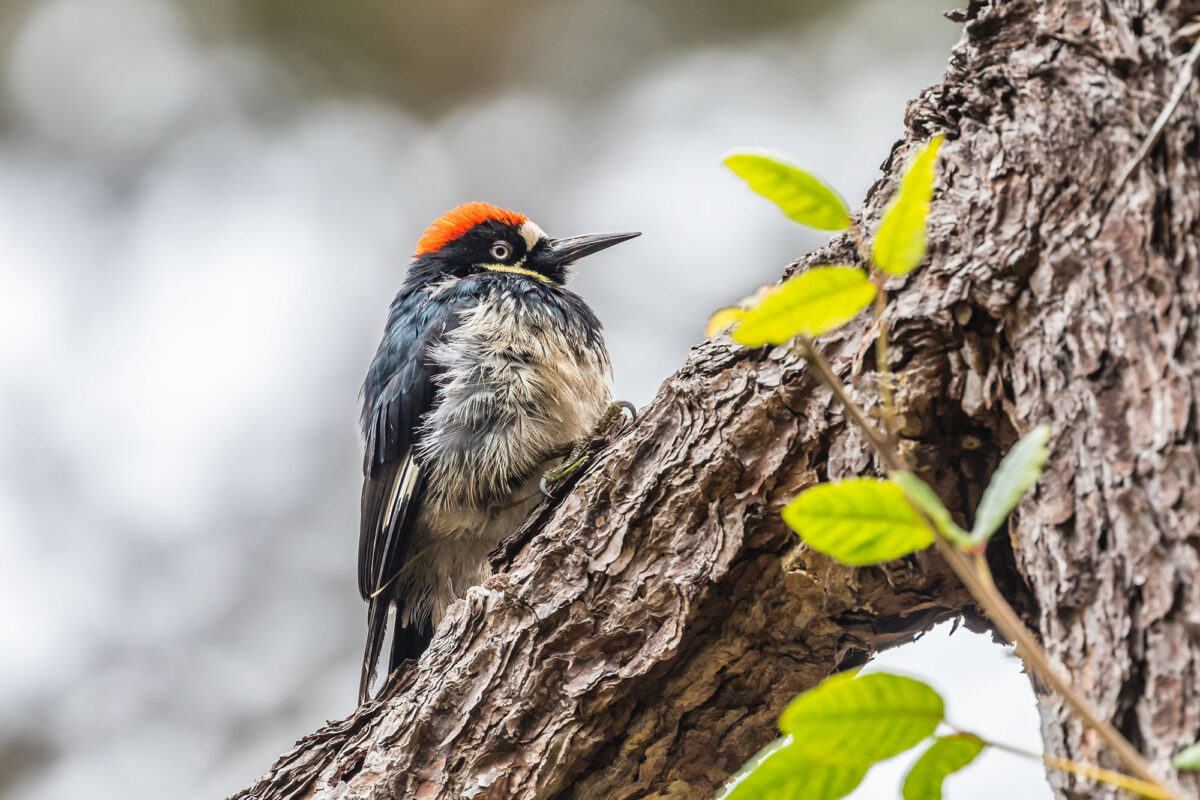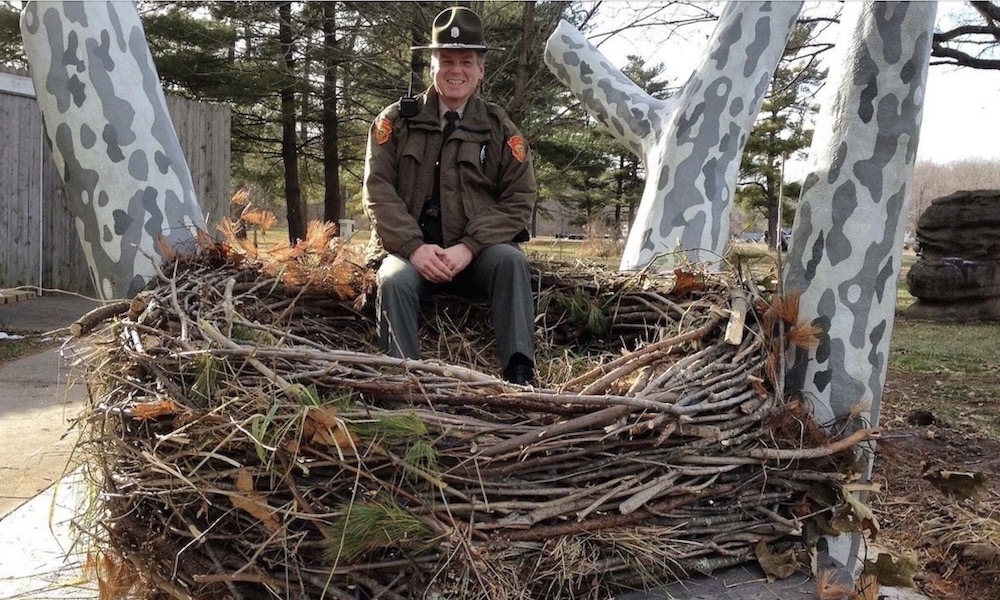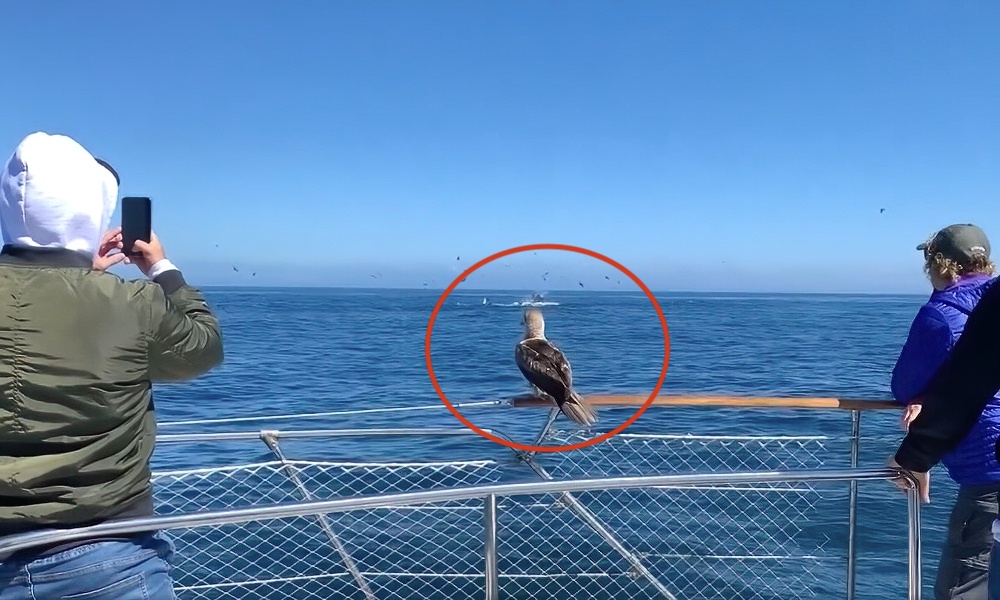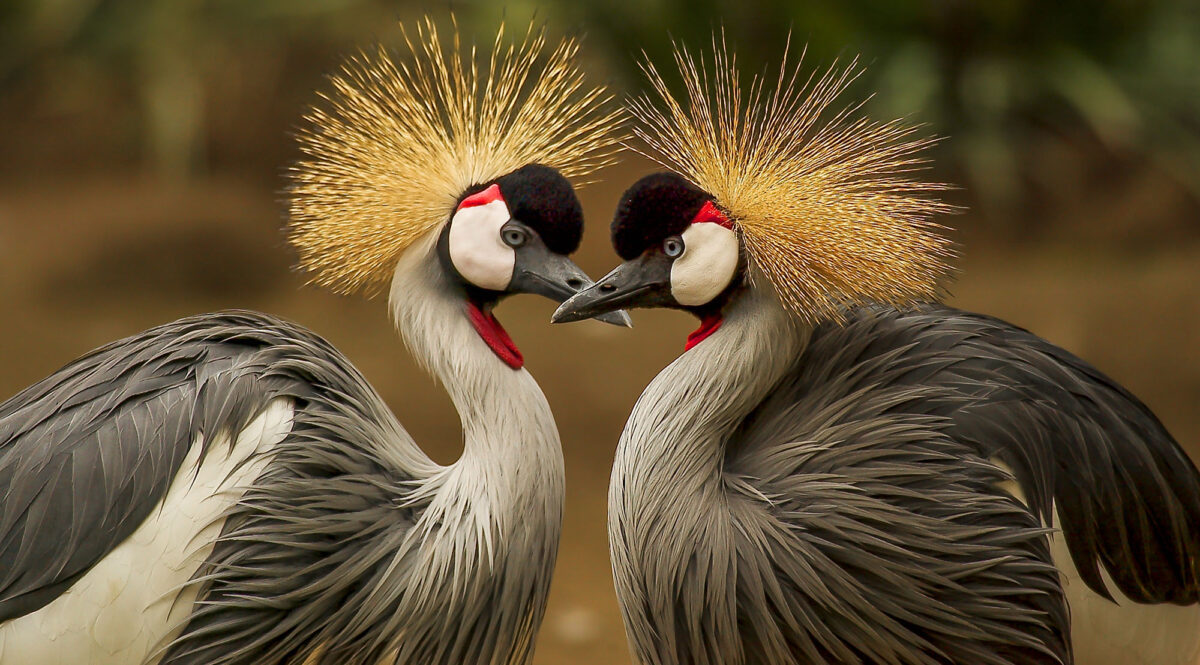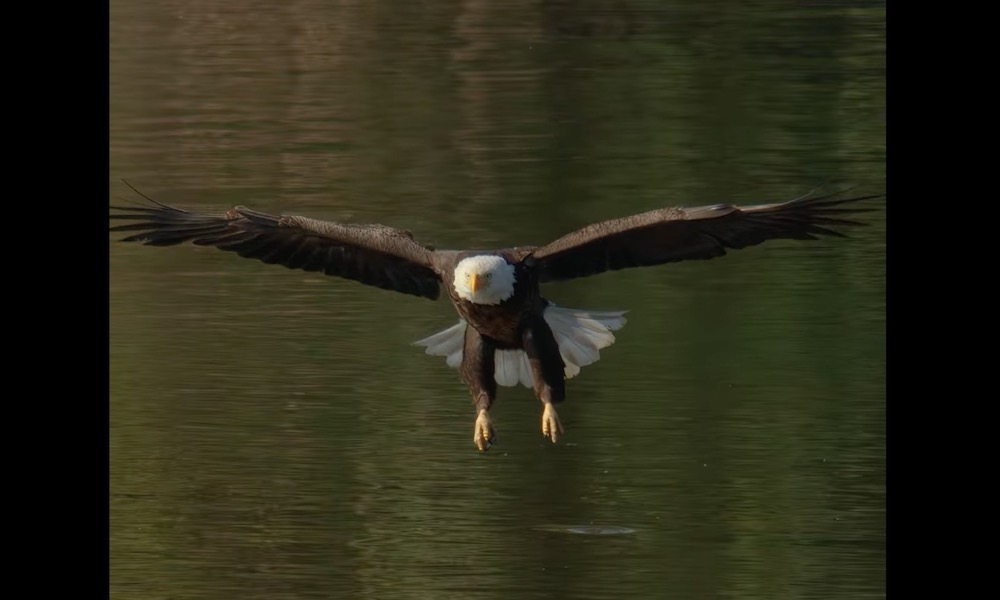While I was visiting Greenville, South Carolina, I took an unofficial poll. The results were unanimous: my sources told me Lake Jocassee is the state’s prettiest lake. The 7,565-acre lake is 42 miles northwest of Greenville in Devil’s Fork State Park. People visit the park to swim, fish, kayak, hike, camp, and even scuba dive.
Learn all about Lake Jocassee and Devil’s Fork State Park in the guide below. And if you’re a runner who plans to be in Greenville next May, see how you can get involved in the local Mountains to Main Street Half Marathon here. It’s a race you won’t want to miss.

Recreating in Devil’s Fork State Park
If you visit in springtime, you can hike the easy 1.5-mile Oconee Bell Nature Trail and look for a rare Appalachian flower. Found only in a few places in the mountains of South Carolina, North Carolina, and Georgia, Oconee bells are little white and yellow blossoms with red stems.
During my visit to Devil’s Fork State Park, I focused on paddling. I rented a kayak from Jocassee Lake Tours, which also offers guided boat and kayak tours with a naturalist. Two guys from the company met me at one of the park’s three boat ramps and helped me launch. There was little boat traffic on the lake, which surprised me on a Sunday in late May. At times, I saw only lush greenery, water, and the occasional turtle — no other people in sight. You can also rent canoes, kayaks, pontoon boats, and standup paddleboards from Eclectic Sun.

If you want to stay over in the park, rent one of the 20 lakeside villas, some of which are pet-friendly. There are also campsites for RV or tent camping and even one boat-in campground. Boaters can also see a few hidden waterfalls only accessible from the water.
You can swim in Lake Jocassee, too. There are no lifeguards, so be careful and watch your kids.
Birders will also appreciate Devil’s Fork State Park. Visitors can note their sightings on the park’s birding checklist.

What’s underwater at Lake Jocassee?
Lake Jocassee is known for its clean, clear water. But what really attracts scuba divers is what’s under the water: a flooded town and cemetery. In 1973, the state partnered with Duke Power to build Jocassee Dam and create the lake. Underwater relics include a lodge, girls’ camp, sunken Chinese boat, and the Mt. Carmel Cemetery. This is the cemetery featured in the 1972 movie “Deliverance” — made one year before the area was turned into a reservoir. Bodies were exhumed before the dam was built, but divers can see headstones 130 feet below the surface. Some divers have even reported spotting artificial flowers.

Lake Jocassee and Devil’s Fork State Park are year-round destinations. Only the hardiest will want to swim in the winter when water temperatures drop to the 50s. But it’s a beautiful place for hiking, birdwatching, and paddling any month of the year.
Disclaimer: While this article was not sponsored, Visit Greenville SC hosted the writer during her visit to South Carolina. As always, Outdoors Wire operates independently, and this doesn’t influence our coverage.
